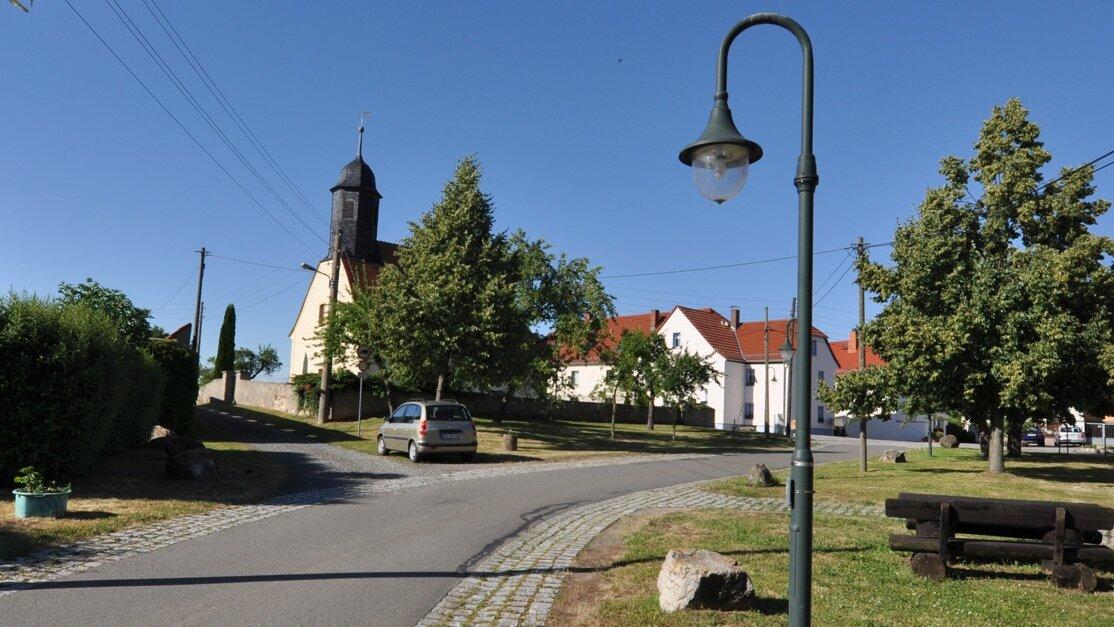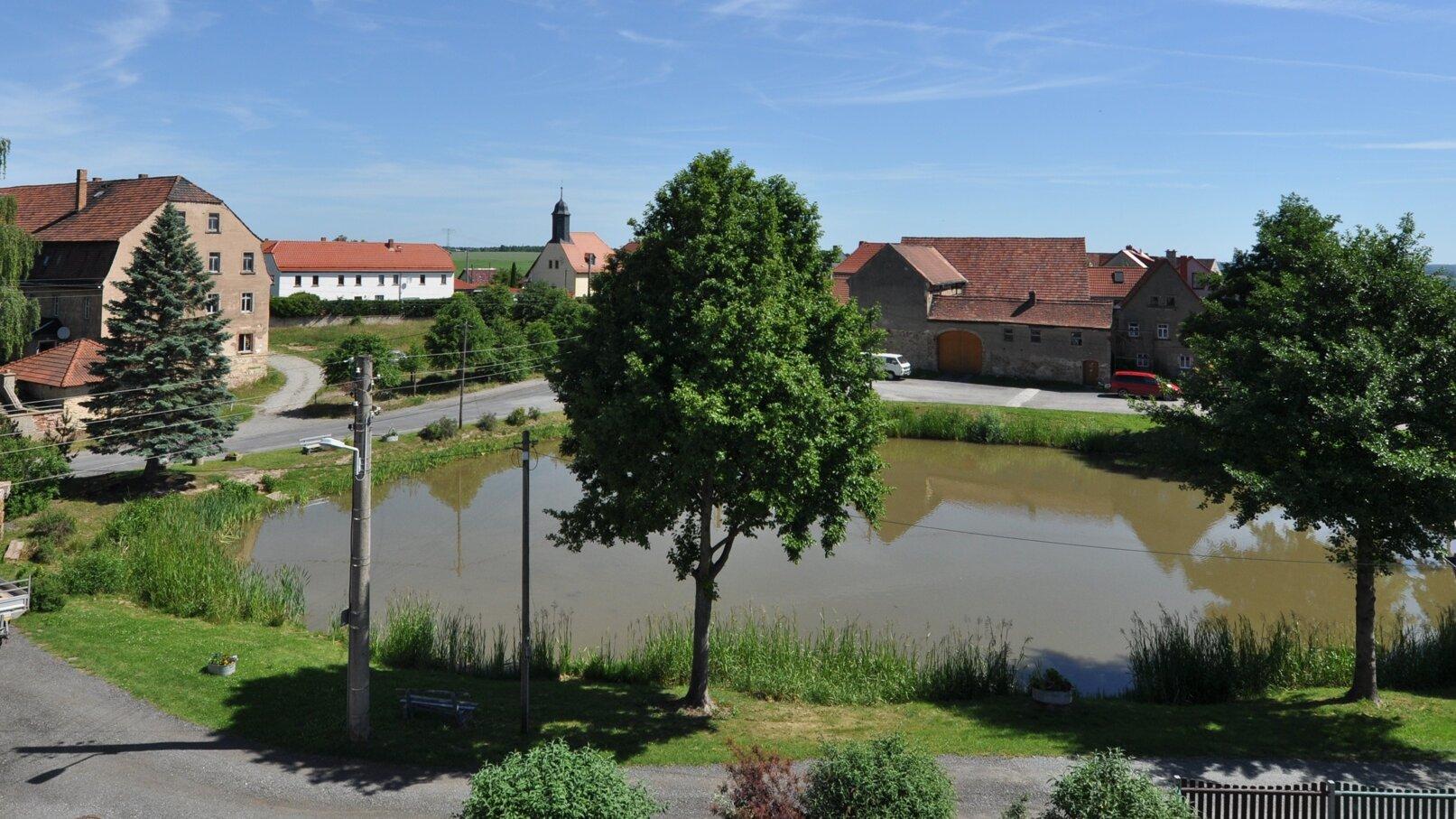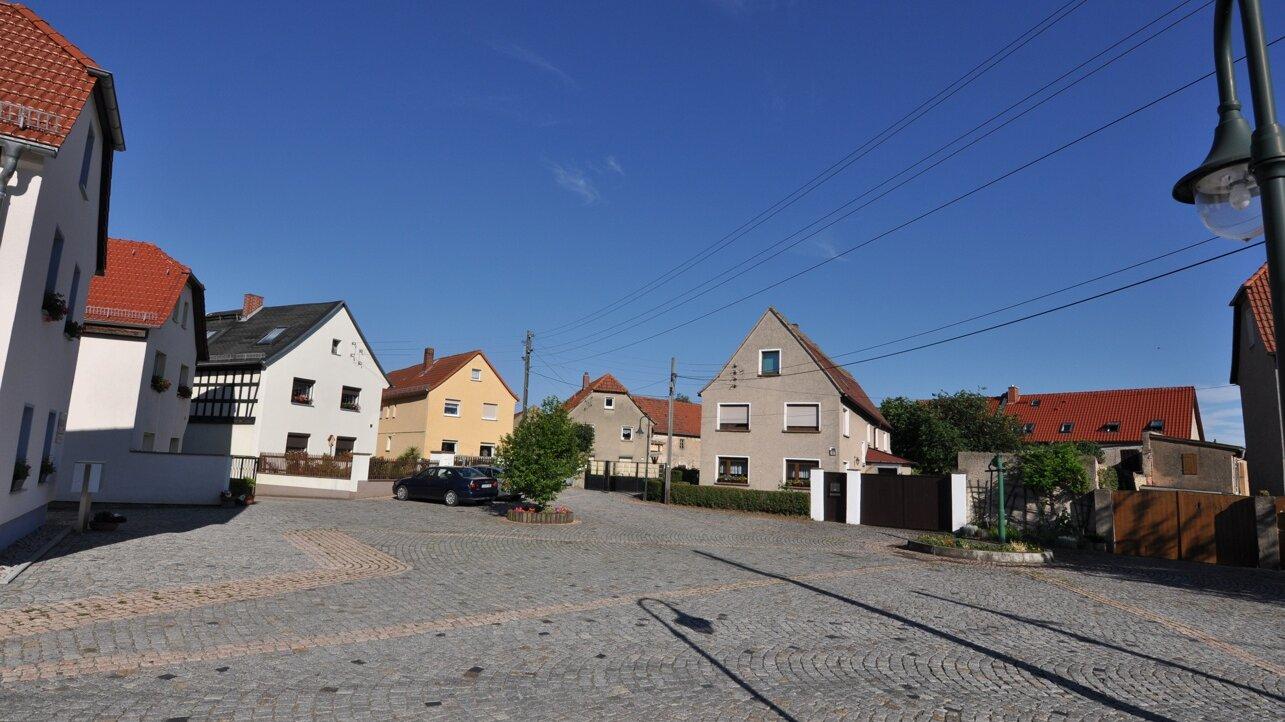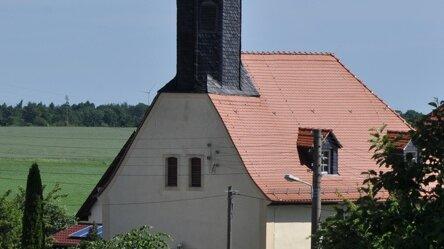District Weißig
![[Translate to Englisch:] . © Herbert Zölsmann](/_next/image?url=https%3A%2F%2Fcms.gera.de%2Ffileadmin%2Fgera_de%2F_processed_%2Ff%2F3%2Fcsm_Dorfteich_mit_Blick_aus_Richtung_Buergerhaus_in_Richtung_Kirche_785f23eb18.jpg&w=3840&q=75)
Data and facts
| Name of the disctrict: | Weißig |
| with the localities: | Weißig, Gorlitzsch, Schafpreskeln |
| District of the city of Gera since: | 01.04.1994 |
| Surface area: | 459 ha |
| Population: (as at: 31.12.2022) | 171 |
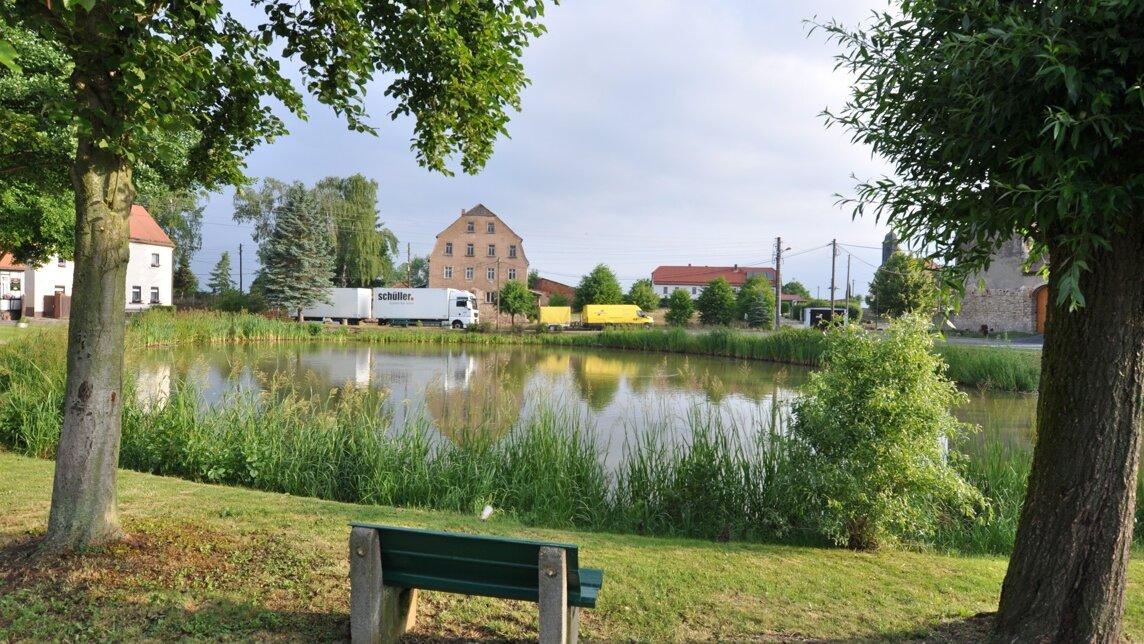
Location and transport connections
| Location: | Weißig is located in the south-western part of the town, directly on the former B 2 and on the border with the district of Greiz. The villages of Gorlitzsch and Schafpreskeln have historic settlement centers with an agricultural character with old farmhouses and farmsteads. The villages of Weißig, Gorlitzsch and Schafpreskeln are small old villages with some newly designed buildings near Lusan, the new development area on the southern outskirts of Gera. |
| Utilization: | The established village areas are strongly village-like in character and reflect the historical combination of agriculture, small businesses, leisure gardens and housing in terms of design. |
| Landscape and site design: | Weißig, Gorlitzsch and Schafpreskeln are criss-crossed by hills and valleys. The landscape is characterized by farmland, meadows and woodland. The development is typical for the region and is characterized by detached and semi-detached houses, various farmsteads and four-sided farms. There is also a widespread network of footpaths and the street structure is village-like |
| Transport connections | Weißig can be reached via the former B2. Gorlitzsch can be reached via the B 92 connecting road to the former B2 and Schafpreskeln can be reached via the junction of this connecting road at the end of Röppisch. Internal access is via the district roads and paths. Weißig can be reached by local public transport via bus route 10 and Schafpreskeln on school days via route 13 of Verkehrs- und Betriebsgesellschaft Gera mbH. ------ Gera bus line 11 several times a day direct connection to the former B2, now a district road three highway entrances (2 x A9 and 1 x A4) within a radius of 15 km Regional transport line Gera-Schleiz |
History
Weißig
Weißig was first mentioned in a document in 1533. However, the history of the village begins as early as the 12th century with a roadside chapel. A chapel dedicated to the patron saint of carters, St. Wolfgang, was built at the intersection of two important trade routes.
One of the trade routes already existed from the early Middle Ages and led from Leipzig via Gera to Hof and Nuremberg. This was an important, much-used old trade route, which roughly corresponds to the course of the former B 2. This old trade route is crossed by a road that leads from Zwötzen via Zeulsdorf, Markersdorf and Hundhaupten to Münchenbernsdorf. The present-day village of Weißig was founded at this crossroads.
An inn and tavern was built, one of the later hereditary taverns of the Principality of Reuss.
The village pond in the middle of the village has also existed for ages and was once used as a watering place for horses.
The chapel became a simple little church and two large and a few small farmers settled around it. You can find out more about the 450-year history of the independent municipality of Weißig in the local chronicle. In 1994, Weißig and its districts Gorlitzsch and Schafpreskeln, which had belonged to it since 1950, were incorporated into Gera.
Today, the district of Weißig is an idyllic place in a beautiful landscape at the southern gates of the city of Gera.
Gorlitzsch
The village was first mentioned in 1533. However, earlier finds in the area point to a Stone Age settlement. In 1923, the two villages of Gorlitzsch and Schafpreskeln merged to form a single municipality called "Gorlitzsch-Schafpreskeln". In 1950, the two villages merged to form the single municipality of Weißig.
Schafpreskeln
The place "Prosklin" was first mentioned in a document from 1362 in connection with the Cronschwitz nunnery. However, there is no evidence as to whether it was Schafpreskeln or Taubenpreskeln. In 1545, Schafpreskeln was an outlying estate of the Zossen estate and the hunting lodge of the Elector of Saxony was located here. Until 1918, the border between the Grand Duchy of Saxony-Weimar-Eisenach and the land of the Principality of Reuss younger line ran directly through the valley.
